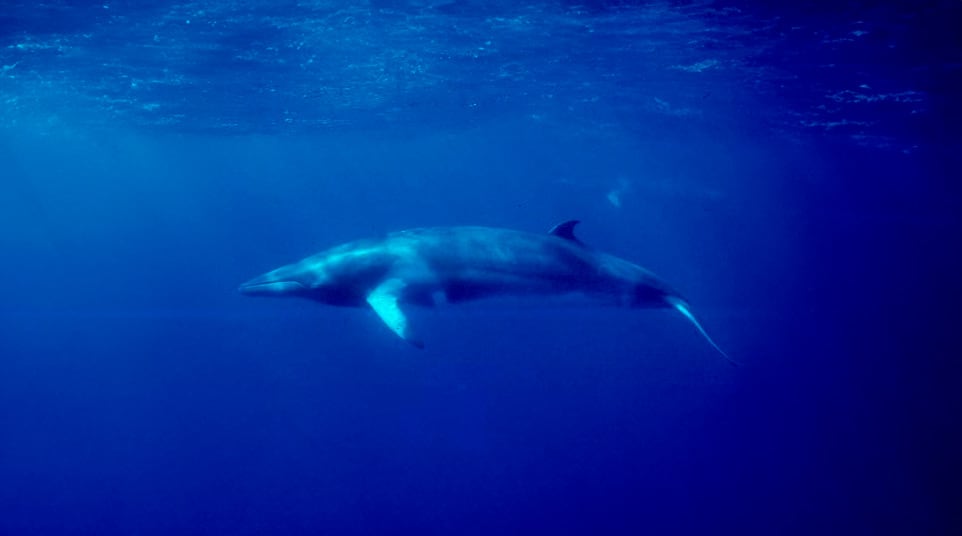- Home >
- Travel Guide >
- Galapagos Islands >
- Animals & Wildlife >
- Galapagos Minke Whale
Galapagos Minke Whale Facts
Name: Galapagos Minke Whale
Family: Baleanopteridae
Scientific Name: Balaenoptera acutorostrata
Length: 6.16–6.75 m (20.2–22.1 ft) and 6.03–7.15 m (19.8–23.5 ft)
Weight: Males 2.85 and 4.23 tons Females 1.93 and 3.63 tons
Blow: Small, vertical and bushy but usually not visible
Breaching: Variable angles
Deep dive: Tail flukes not raised
Group size: 1-2
Category: Rorqual Whales
All 6 of the world's species or Rorqual whales have been recorded in Galapagos. The rorqual whales are large to very large, and include the biggest animals on earth. They differ from all other cetaceans in the region because they do not possess teeth. Instead, their upper jaws are lined with bony 'comb-like' plates called baleen which filter out small fish or zooplankton as the whale engulfs enormous quantities of seawater whilst swimming along. Rorquals have a double blowhole (single in toothed cetaceans), placed centrally on top of the head, a pleated throat capable of great expansion whilst feeding, a 'U'- to 'V'-shaped flattened head and a streamlined body for fast swimming.
Rare offshore
Identification:
The smallest of its family, similar in size and shape to the beaked whales but its pointed snout, with a single ridge on the upper surface, distinguishes it from toothed cetaceans. Differs from other rorquals in its small size, lack of a tall blow, and large dorsal fin in relation to body length. Like the Sei Whale, the dorsal fin usually appears at the same time as the blowhole on surfacing. Many individuals show a white flipper band which is diagnostic.

